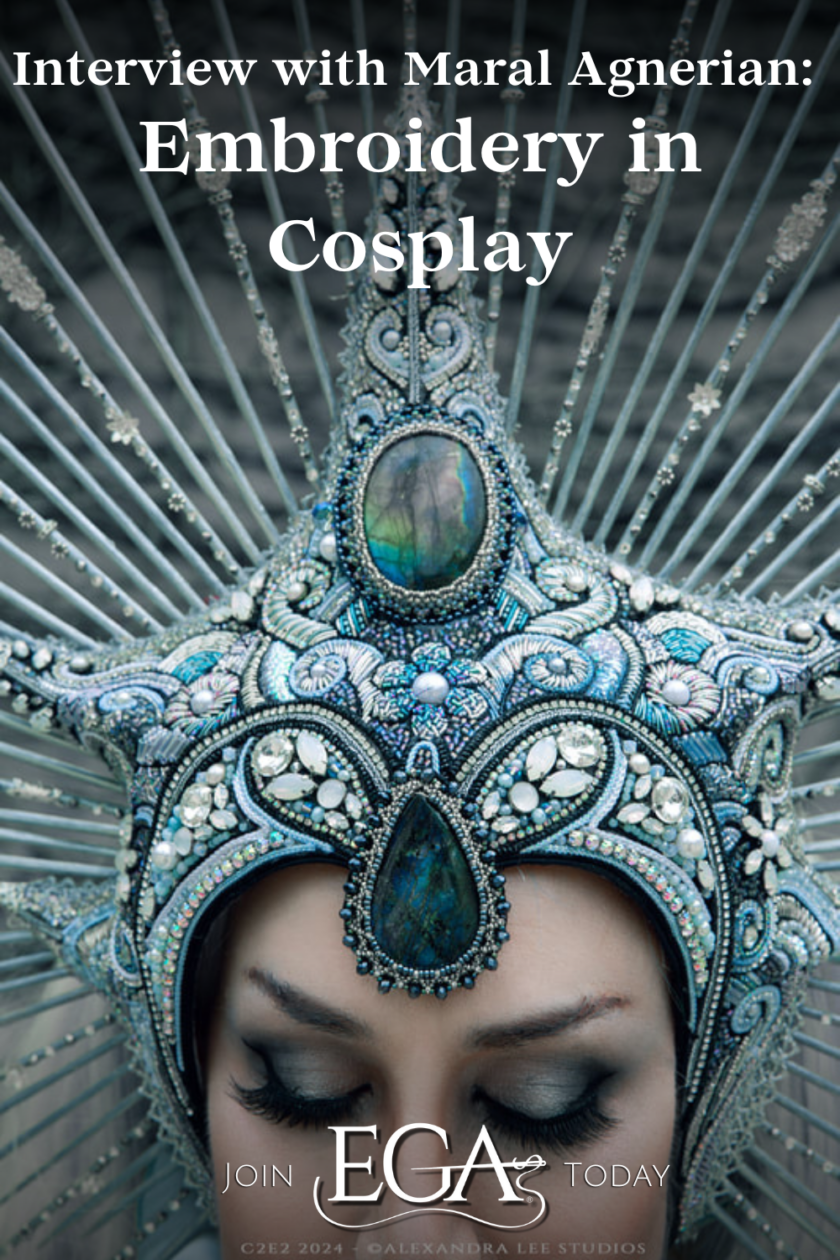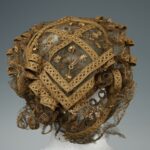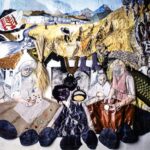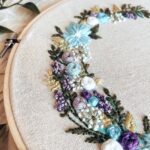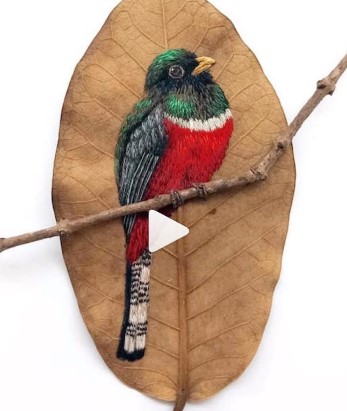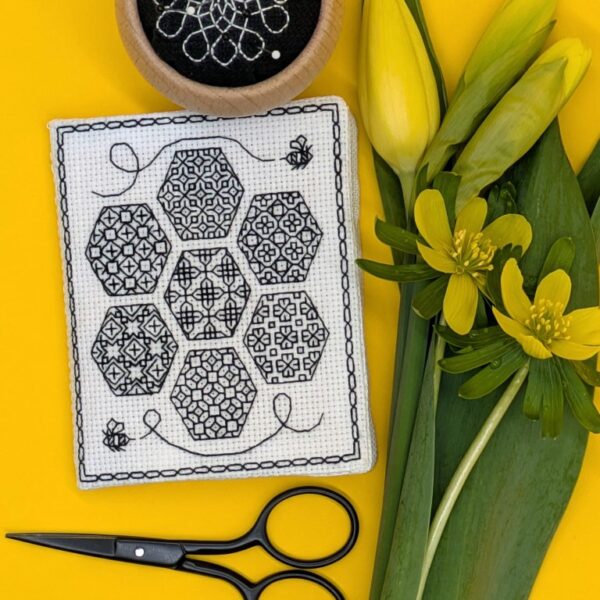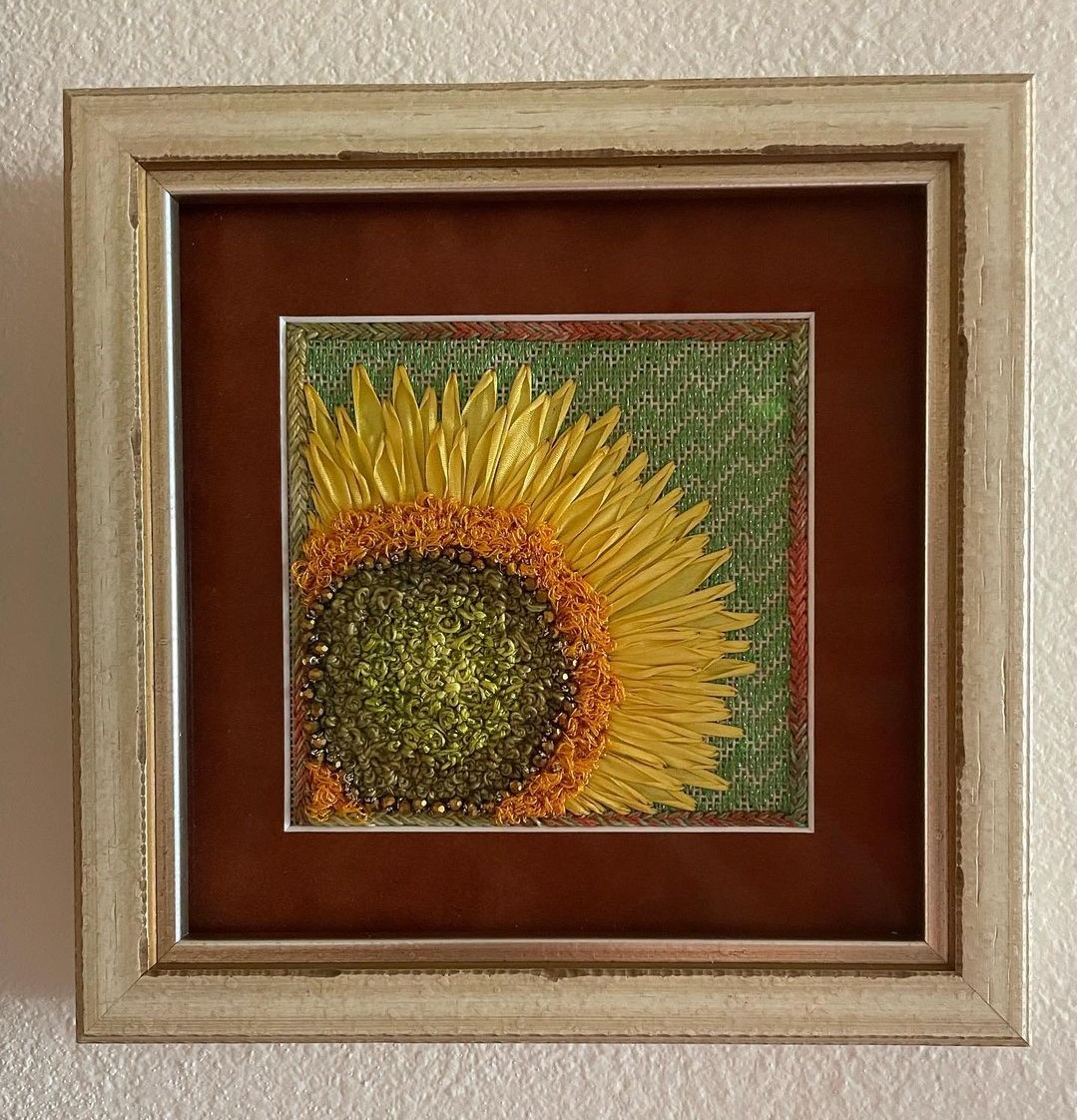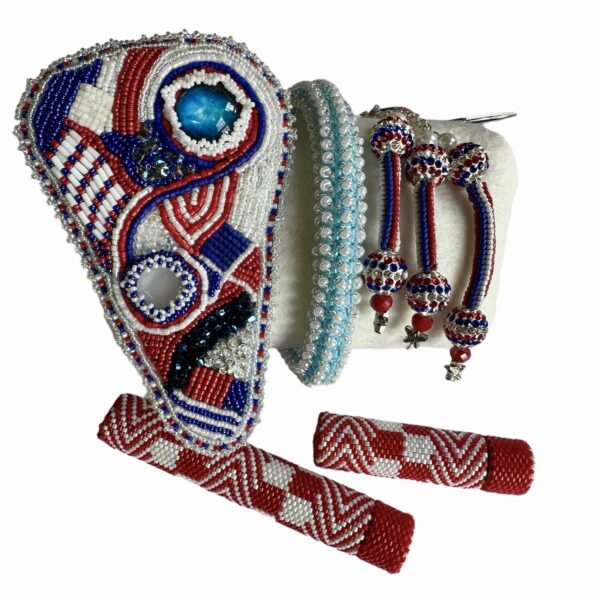This month EGA was excited to sit down and talk about the resurgence of embroidery in cosplay with Maral Agnerian, AKA Sarcasm Himé. Maral leads our next virtual lecture, Embroidery in Cosplay, to illuminate the exciting world of cosplay and its engagement with needlework and textile traditions. Here, Maral shares her history with cosplay and the cosplay community, and how cosplay shines a light on the beauty inherent in slow fashion techniques, the value of women’s work, and the growing trend of using goldwork and embroidery in the cosplay community.
What were your first experiences with textiles and needlework? Have you found yourself exploring needlework outside of cosplay and costuming?
My parents both sew, and my mother made a lot of my clothing when I was small, so I was familiar with the basics. I also did costuming for my high school theatre production, but even then, I was mostly focusing on drawing and painting; my focus on costuming came a bit later.
I am fascinated by textiles in general, so I love to visit museum textile collections and learn about various techniques of weaving, needlework etc. I love to see how different cultures around the world came up with similar solutions for textiles and embellishment, like the similarities between some goldwork techniques and traditional First Nations quillwork. There are many techniques I’d love to get into, if only I had more space and more time. I definitely want to learn more embroidery stitches, as I tend to stick to a small number of stitches for most of my projects.

What inspired you to channel your skills with textiles and needlework into cosplay and costuming?
I trained as an illustrator, but I’ve always been interested in a wide variety of handmade arts such as metalworking, ceramics, needlework etc. I just wish I had time to learn them all!
I had always liked dressing up for Halloween, and when I discovered fandom culture in the late 1990s and that you could dress up any time of the year, that changed the trajectory of my life. The more costumes I made, the more I found I enjoyed fine detail and hand work, so over time I have tended to choose designs where I can integrate needlework since I enjoy the process so much.
In recent years there has been a resurgence in traditional stitching and sewing methods in the world of cosplay, and it often finds itself head-to-head with other techniques such as armor-building and foamsmithing. Do you have any insight on what is driving the return to handwork and needlework?
It’s hard to be certain, but I think the foam and armour boom was due to the novelty of the materials and the ease with which you could create really big and eye-catching costumes. But now it’s been several years, the novelty has worn off, and some people are looking further afield to give them an edge in competition. Part of that is rediscovering older techniques; I think the ‘slow fashion’ movement has also factored in. There is also more awareness and discourse recently on respecting traditionally ignored and maligned “female” arts, rejecting fast fashion, and valuing textiles and the work that goes into them.

What was the first character design you saw that made you think “I have to make that”? What skills did you already have to execute it, and what techniques did you learn in the process?
It’s hard to identify one particular design, as right from the beginning I have been mostly inspired by seeing something I really want to bring to life. For some people, cosplay is about finding a character they truly connect with and wanting to embody that character, but for me 90% of the time it’s about the design first.
One example where it was both is my Princess Leia from The Empire Strikes Back; I grew up watching the original trilogy constantly and had always idolized Leia. When photos of the original film costume on display hit the internet, I was enamored and simply had to make it. It was my first big embroidery project and taught me a lot; I put the cape in a backpack and carried it with me everywhere for about six months.
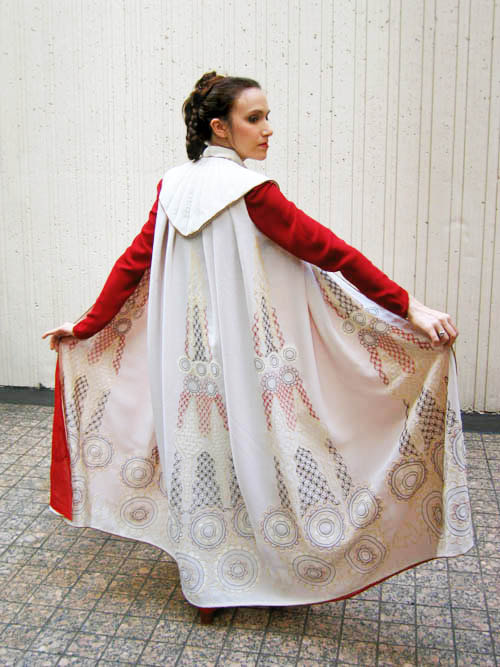
Your cosplay name is “Sarcasm-himé.” Where did the name come from?
Haha, it’s a very old in-joke from my early days in anime and fandom. “Himé” means “princess” in Japanese, so I’m Princess Sarcasm. At some point it just became too late to change it as everyone already knew me as that name.

Do you have a favorite cosplay piece? Why is it your favorite?
It’s hard to decide as my favourite work is often what I’ve done most recently, but one piece that always makes me smile is the headdress from my historical Ghidorah. He’s a 3-headed dragon from the Godzilla movies that I turned into an 18th-century-style dress, and made little dragon heads for the crown.

I am also very fond of the little bead-embroidered creature I made for the stomacher of my Laudna costume. Her character’s magical familiar is a little undead rat with a crow skull for a head, so I embroidered him with rhinestones for his bones.

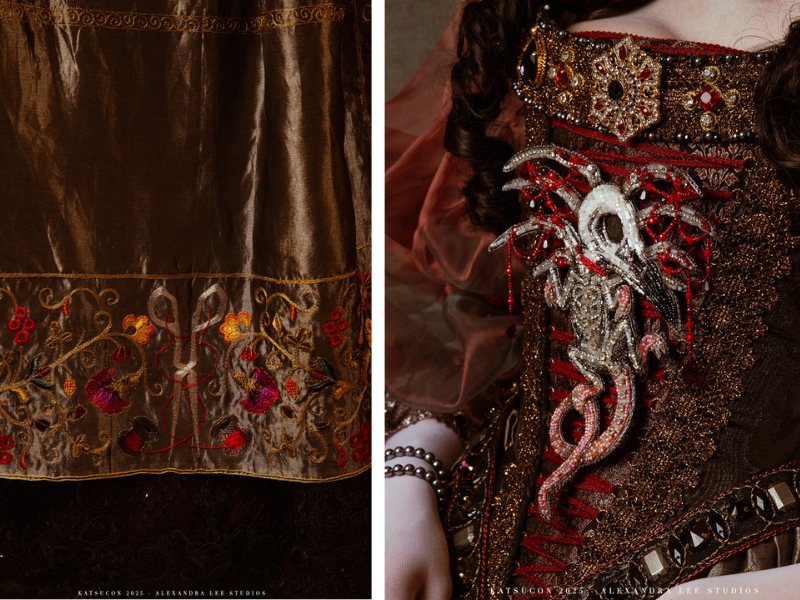
What are your favorite techniques to incorporate into cosplay pieces?
Unsurprisingly, I like needlework the best, especially couching; I find it incredibly versatile in terms of surface embellishment. I’ve been doing a lot of goldwork lately, but I also love texture in general and playing with tone and depth using layered sheers, pleating, smocking etc.

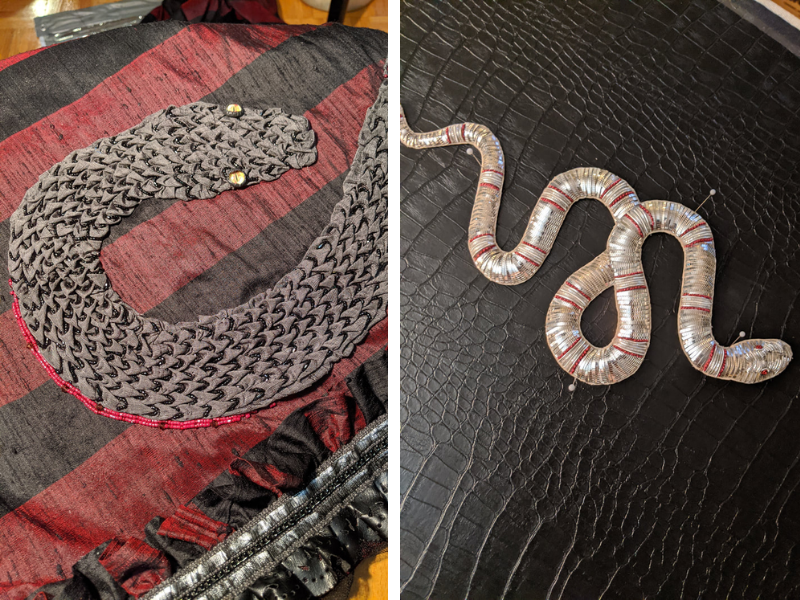
I tend to choose cosplay designs that already have embellishment in the design, or that can be modified to include surface embellishment. In the past few years I have also really enjoyed combining my love of historical fashion with cosplay by designing costumes that are based on a specific historical period but themed on a character, such as my 1910s Erté Hela (from Marvel), my 1760s Crowley (from Good Omens), or my 1600s Laudna (from Critical Role). This enables me to exercise my creativity by putting a new spin on an existing character, have fun with historical sewing techniques and embellishments, while still making something that will be recognizable to a fandom convention attendee.
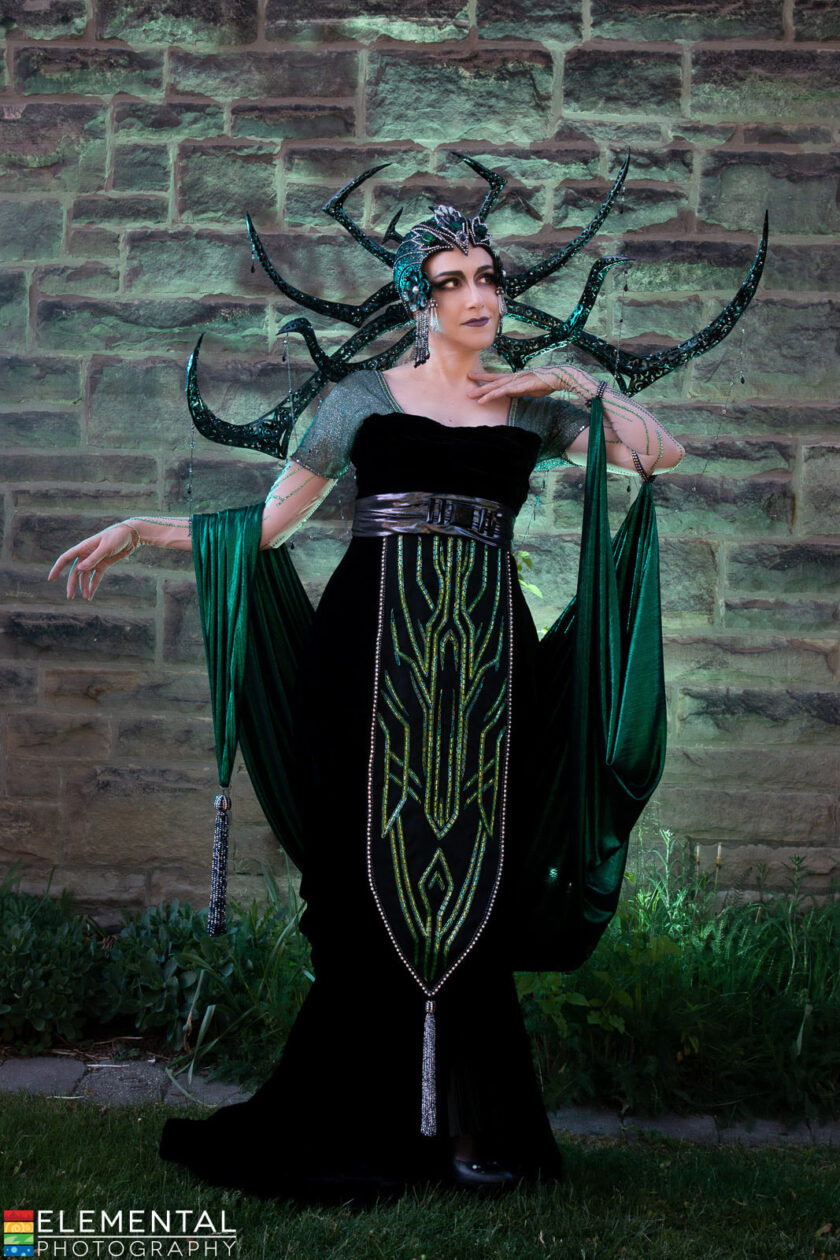

You have been a judge in some very high-profile cosplay competitions and competed in them yourself, including NYCC Crown Champion two years ago with Snow Glass Apples. Can you describe what it’s like being both behind the scenes and in front of the judge’s table? What do you look for in judging needlework while in competition?
Competitions can vary a lot depending on type and location, and it always comes down to who else shows up; all you can control is to bring your “A” game and hope for the best. At most competitions, we will have craftsmanship judging done individually up close before the stage show, often by appointment. Contestants will provide reference materials showing the source of their design (whether recreation or original), and explain their design and construction process. As part of this judging we get to see all the fine details that aren’t visible from the audience, and learn about any cool or original problem-solving the contestant may have done (as 2D characters often need some creativity to bring to 3D life).
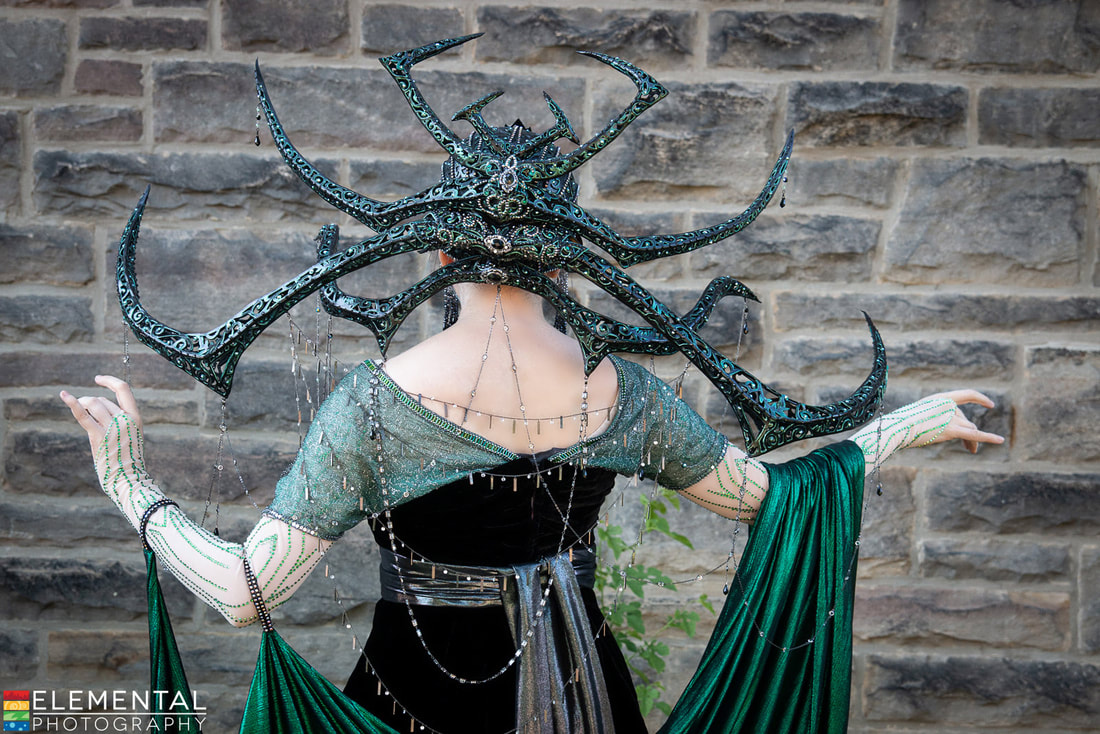
When judging needlework I look for neatness and cleanliness of execution, creativity of material use, and appropriateness for the design. For example, a giant goldwork motif may look impressive, but if it doesn’t fit aesthetically with the rest of the costume, or if it’s so heavy it’s weighing down the cape, that could prove a detriment rather than an advantage. Making educated choices for embellishment techniques is one of the things I teach in the presentations I give at conventions.
Judging at the international championship level (like for the Crown Championship of Cosplay) is incredibly difficult; cosplayer friends in the film/TV and theatre industries have commented on how the standards of perfection demanded in high-level cosplay competitions are often much higher than they are in their time-sensitive professional work. In competition we are checking every seam, examining every detail, and in many cases we’re comparing over a dozen completely flawless costumes in trying to determine a winner. It can be extremely stressful, especially since people have frequently been spending literal years on their costumes and big prizes are often on the line.

Cosplay is an incredibly tight-knit community of amazingly talented makers such as yourself, all learning together and from one another. Do you have any techniques you learned from peers, and what is it like passing on your knowledge to other creators through workshops and panels?
I am constantly learning new things from my peers; if I tried to make a list we’d be here all day! Just recently I tried my hand at my first ‘helmet wig’, a popular technique these days for making wigs with permanent styling, especially useful for wild and anti-gravity styles commonly seen in anime.
There are so many great tutorials and helpful resources today compared to when I started back in 1999. Back then cosplay was a much smaller and more niche hobby and it was also the early days of the internet, so resources were much sparser and harder to find. I was actually one of the first cosplayers to publish tutorials on their website, and still occasionally get people coming up to me at conventions to tell me how much my tutorials helped them when they were starting out. There are so many more options now, but it’s a nice feeling to have been part of that early community-building. I have been helped by so many people over the years and firmly believe in passing that forward.
I especially emphasize in my embellishment and embroidery panels/workshops that you don’t need a big budget to achieve beautiful results when it comes to embroidery and surface decoration. It just takes time, and some creativity when it comes to materials.

What advice do you have for textile and needlework artists interested in exploring cosplay? Where should interested crafters turn to learn more about cosplay and engage with the community?
One thing to know about cosplay is that since pre-made cosplay has become much easier to acquire in the past 10 years, many cosplayers just buy costumes in order to dress up and have fun. So there’s kind of an overlap between the two different but closely related hobbies of “cosplay” as simply the act of dressing up, and “cosplay” as making a costume to wear. But we also have a new generation of cosplayers who start out buying, but then branch out into making, and it’s those that I’ve been focusing on lately when it comes to developing new educational panels at conventions.
Sadly, since the advent of social media, we don’t really have a central place for cosplayers to connect online like back in the days of internet forums. There are a lot of cosplayers on platforms like Instagram, TikTok, and Reddit, and each platform has a slightly different community and feel.

What do you hope attendees take from your Virtual Lecture, Embroidery in Cosplay?
Some people would dismiss embroidery as ‘old-fashioned’ and irrelevant to modern life, but I find it heartening to see younger generations rediscovering older techniques and hobbies and reinterpreting them in a fresh way. Since many cosplayers have come into sewing and needlework via very different channels than more traditional textile artists, there can sometimes be an information gap between the communities. I think there is a lot of potential for needlework artists and cosplayers to connect and learn from each other!
